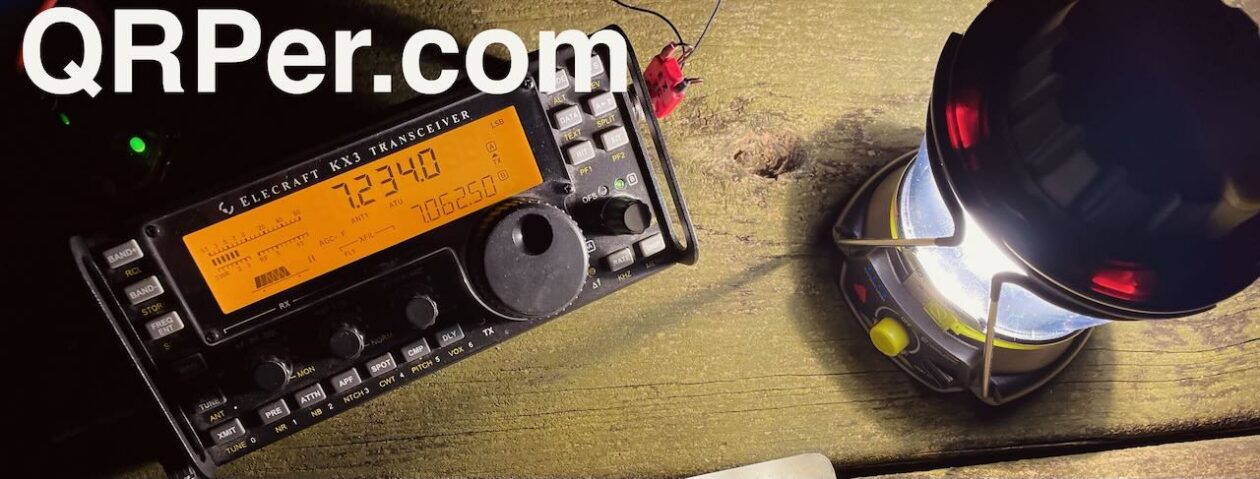 While visiting my parents this week in the Piedmont of North Carolina, I took some time Monday afternoon to take the new Icom IC-705 to field and activate Lake Norman State Park (K-2740) for the Parks On The Air (POTA) program.
While visiting my parents this week in the Piedmont of North Carolina, I took some time Monday afternoon to take the new Icom IC-705 to field and activate Lake Norman State Park (K-2740) for the Parks On The Air (POTA) program.
So far, most of my time with the IC-705 has been in CW mode but a number of my readers have been asking about SSB operation and performance.
My goal for this park activation was to give the IC-705 a proper shake-out on SSB.
Set-up
The activation was very much impromptu–I only decided I could fit it into my day an hour before my start time. In addition, while it wasn’t raining per se, there was a very heavy mist/fog that, at times, felt like a light sprinkle/drizzle.
I packed and planned on using my IC-705, mAT-705 external ATU, and Vibroplex End-Fedz EFT-MTR wire antenna.
I had an issue with the mAT-705 ATU (read more here), so opted for my trusty and incredibly capable Emtech ZM-2.
I did begin the activation in CW and quickly racked up a dozen or more contacts in short order after spotting myself. One of the great things about Lake Norman State Park is it’s one of the few locations I activate these days with proper cell phone coverage for mobile internet so that I can update my own activation spots on the POTA site.
I also moved up to 20 meters and switched over to my recently (re)acquired Elecraft KX1 (FYI, I named her “Ruby” so no way will I sell her again).
I quickly snagged two states (Iowa and Kansas) with 1 watt of power from the KX1’s internal AA cells, then 20 meters fell silent, so I moved to 30 meters to work a few more stations.
SSB on 40 meters
I then moved to the 40 meter band and decided to record a quick video after spotting myself on 7197 kHz. I wasn’t expecting such a productive mini pile-up.
As you can tell from the video, I had my hands full trying to hold my phone/camera, log, and manage the hand mic. Note, too, I prefer not hooking up the speaker portion of the microphone because audio from the IC-705 internal speaker is far superior:
I operated SSB for a good 30 or so minutes and was busy with contacts thanks to all of those excellent POTA hunters.
IC-705 Voice Memory Keyer
Before packing up, I remembered that my buddy Dave had asked me to make a video showing how I use the IC-705’s voice memory keyer, so I moved up to 20 meters (which you’ll see was pretty much dead) and recorded this.
Doh! I had the SSB position in LSB instead of USB! Thanks to one of my YouTube viewers who noticed this. I had been tinkering with mode settings earlier while evaluating the rig. No worries, though, this was more a demo of the memory keyer–check out SSB operation in the video above.
I was actually very relieved 20 meters was dead because I’m terrible at managing a camera, a tablet, and a microphone all at once!
The Icom IC-705 is an SSB champ

Despite the fact that I was using the default microphone settings and had not even touched the TX EQ or compression, I received no less than three unsolicited compliments about my audio during this activation. That is probably a personal record.
No doubt, the IC-705 is a very capable rig for QRP SSB where audio quality is essential.
On top of that, the eight voice keyer memories are incredibly useful when activating a park, a summit, or even running a contest where you could truly automate your exchanges.
Have you been using the IC-705 in the field? What are your thoughts? Do you have any questions? Please feel free to comment!




















































